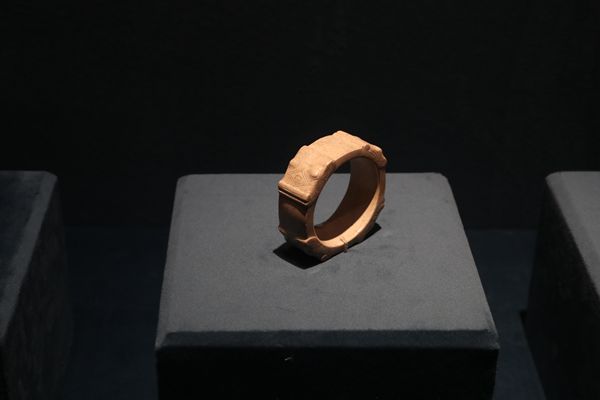Milestones of millennia: Role of jade in China history explored
By Wang Kaihao | China Daily | Updated: 2019-07-25 07:55

"They were only discovered in the graves of the highest echelons of Liangzhu society," Liu says. "That is to say only nobles, who were also religious chiefs, had the right to own cong. So, these items may have been used by the tomb occupants during their lifetime.
"Perhaps they once wore cong like people wear Christian crosses or Buddhist beads today," he adds.
However, the biggest cong ever found, a 6.5-kg article commonly referred to as the "king of cong" due to its size, is probably too heavy to be worn. This highlight of the ongoing exhibition was unearthed by Liu in 1986 in Fanshan cemetery among the ruins of Liangzhu. More than 1,000 jade articles were found in the cemetery.
Gao explains that while previous exhibitions of Liangzhu jade mainly focused on the most important items, the intention of this show is to present a panorama.
"We selected whole sets of jade found in cemeteries and put them on display at the same time," he says. "That way, people can gain a more complete view of the ritual systems back then."
Axe-shaped artifacts called yue-common symbols of power-were found in Liangzhu. When the "king of yue", the largest item of its kind is put on display, it attracts a great deal of attention not just due to its size, but for its solemn character. A tiny relief of a Liangzhu motif on one corner of the axe looks like the earliest example of a "logo" marked on a Chinese product.
In the graves of female nobles, disc-shaped jades called bi are commonly praised for their elegance. Threads of tubular jade pieces, beads and bracelets at the exhibition also show the splendor and intricacy of the jewelry at the time.
"This uniform ceremonial system using jade shows a united belief and strong cohesion in society," Liu says. "Compared with previous times, jade from the Liangzhu period had made a huge leap in terms of number, size and quality. This boom accompanied the rise in kingship."
























